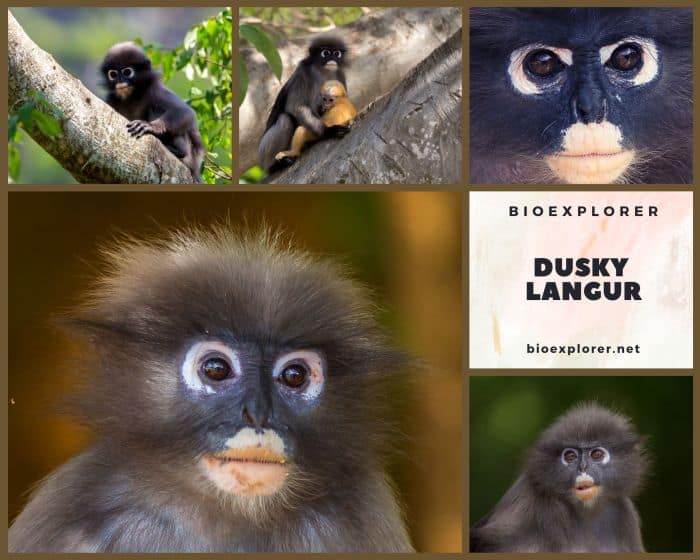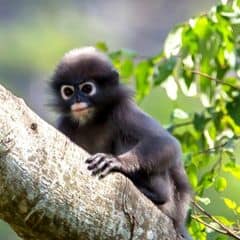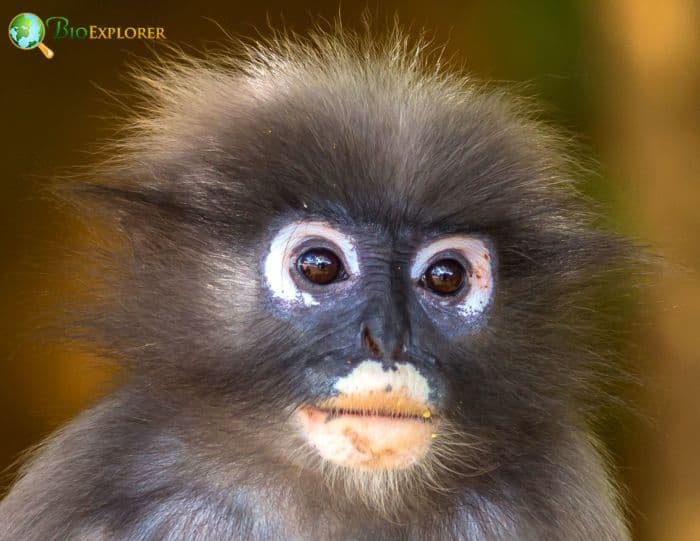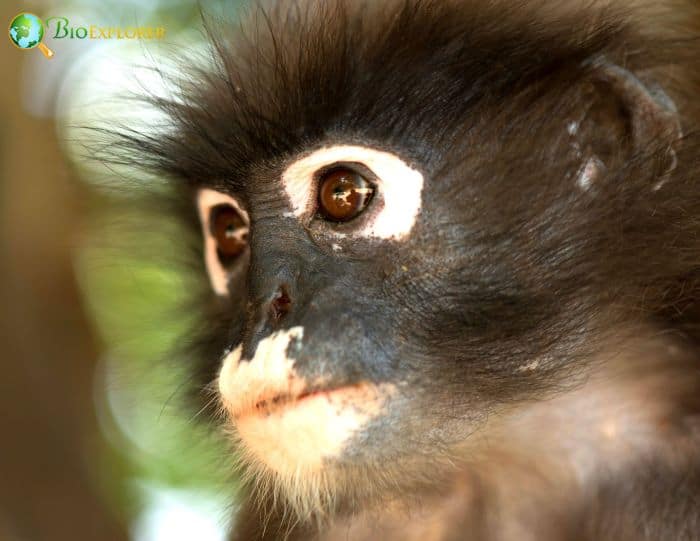
| Animalia | Primates | Cercopithecidae | Trachypithecus | Trachypithecus obscurus |


- Common Name: Dusky Langur
- Taxonomy Classification Year: 1837
- Monkey Size: 42 to 61 cm (16.54 to 24.02 in)
- Skin Color(s): Gray, brown, or black
- Habitat: Taiga, forest, rainforest
- Diet: Herbivorous
- Native Countries: Myanmar, Thailand
Dusky Langur Distribution
Dusky Langur Characteristics

Dusky langurs[1], also known as spectacled langurs, spectacled leaf monkeys, and dusky leaf monkeys, are primarily found in the Malay Peninsula in Asia.
- If a picture of a dusky langur accompanies the dictionary definition of the word adorable, it is hard to imagine anyone would disagree.
- At birth, these Old-World primates have pink faces, and their bodies are cloaked in bright yellow or orange fur.
- However, in the first 6 months of life, a striking and colorful transformation occurs: their hair color changes to shades of black, brown, or gray, with lighter fur on the underpart, tail, and hind legs.
- A subtle spiky hairstyle in a lighter color adorns the crowns of their heads. Adult faces are gray except for the pale pink lips, surrounded by a tuft of white hair.
- The fingers are well developed, and the species has an opposable thumb. The palms and soles are hairless and typically black.
- Although the long tail is non-prehensile, it helps langurs balance as they leap from one tree to another in the upper rainforest canopy.
What Do Dusky Langurs Eat?
The Dusky Langur nourishes on these several plants and trees namely: Microstemon velutinus, Artocarpus rigidus, Gnetum tenuifolium, Microcos laurifolia, Xylopia magna, Maranthes, Xerospermum noronhianum, Sandoricum koetjape, and Streblus elongatus[¶].
Dusky Langur Facts

- White rings surrounding the deep, dark eyes give the species its alternative name, the spectacled monkey or spectacled langur, for a “bespectacled” look.
- The dusky langur’s hands and feet are similar to human primates and can quickly grasp objects.
- To indulge in one of their favorite pastimes – sitting for long periods – nature has given the dusky langur a hard, calloused pad on their buttocks that allow them to comfortably perform this pastime.
- The amount and intensity of ambient light; i. e., the natural lighting of the environment, affects the shade hue of the dusky langur’s fur.
- Dusky langurs are primarily active during the day. They spend most of their time running, leaping quadrupedally (i. e., on all fours) and climbing through the high canopy of tropical forests.
Suggested Reading: Kinds of Monkeys
Cite This Page
APA7MLA8Chicago
BioExplorer.net. (2025, April 12). Dusky Langur. Bio Explorer. https://www.bioexplorer.net/animals/mammals/monkeys/dusky-langur/.
BioExplorer.net. "Dusky Langur" Bio Explorer, 12 April 2025, https://www.bioexplorer.net/animals/mammals/monkeys/dusky-langur/.
BioExplorer.net. "Dusky Langur" Bio Explorer, April 12 2025. https://www.bioexplorer.net/animals/mammals/monkeys/dusky-langur/.
















